Like the other volumes in this series, this is intended to be a textbook for students who already have a solid elementary grounding in linguistics. Of course, I hope that it will prove to be more broadly accessible, but it still seems advisable to make some remarks about the book and its subject with students specially in mind.
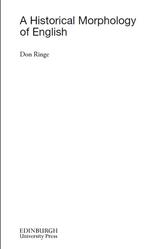
The sources and course of linguistic change.
Many aspects of language change were discovered, explored, and formalized generations ago; the classic example is the regularity of sound change (i.e. spontaneous changes in pronunciation), which was discovered in the 1870s and formalized in phonemic terms in Hoenigswald 1960. As any historical phonologist with broad experience of languages is aware, the regularity of sound change is statistically overwhelming. However, within the past fifty years or so we have also begun to acquire substantial information about how linguistic changes begin and how they propagate through a speech community. As a result, we are now able to identify a process of sound change that appears to be exceptionless within speech communities (narrowly defined), and that must be the ultimate source of the large-scale regularity that we find in the historical record; for discussion see Fruehwald 2016 and Labov, forthcoming.
The spread of linguistic changes through speech communities is by now also fairly well understood, thanks to the work of William Labov and his colleagues and students in sociolinguistics. It is clear that we must recognize speech communities in the narrowest sense—sociologically coherent communities speaking single dialects narrowly defined—and progressively broader speech communities, the broadest being the sum of all narrower communities speaking mutually intelligible dialects. It is also clear that innovations occur locally and spread at first within narrow speech communities; they may or may not spread outward into the broader speech community. A good introduction to these phenomena is Trudgill 2000; a compendium of what the sociolinguistic community has learned about language change is Labov 1994–2010.
Contents.
Preface.
Acknowledgments.
Section A Concepts.
1 Morphology.
2 Linguistic change and the evidence of the past.
Section B Inflectional morphology.
3 Old English inflectional morphology.
4 Inflectional change in late Old English.
5 Casemarking in Middle English.
6 Contact with Norse and French.
7 Middle English verb inflection.
8 Toward Modern English.
Section C Derivational morphology.
9 Inherited derivational patterns.
10 French derivational patterns in English.
11 Latinate derivational patterns in English.
12 Some aspects of modern English derivational morphology.
Bibliography.
Index.
Бесплатно скачать электронную книгу в удобном формате, смотреть и читать:
Скачать книгу A Historical Morphology of English, Ringe D., 2021 - fileskachat.com, быстрое и бесплатное скачивание.
Скачать pdf
Ниже можно купить эту книгу, если она есть в продаже, и похожие книги по лучшей цене со скидкой с доставкой по всей России.Купить книги
Скачать - pdf - Яндекс.Диск.
Дата публикации:
Теги: учебник по английскому языку :: английский язык :: Ringe
Смотрите также учебники, книги и учебные материалы:
Следующие учебники и книги:
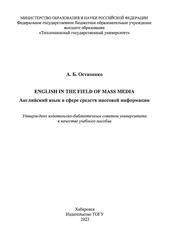 English in the field of Mass Media (Английский язык в сфере средств массовой информации), Учебное пособие, Остапенко А.Б., 2023 — Цель пособия - повышения уровня владения английским языком в сфере про shy;фессиональной коммуникации для обучающихся в области журналистики, рекламы и … Книги по английскому языку
English in the field of Mass Media (Английский язык в сфере средств массовой информации), Учебное пособие, Остапенко А.Б., 2023 — Цель пособия - повышения уровня владения английским языком в сфере про shy;фессиональной коммуникации для обучающихся в области журналистики, рекламы и … Книги по английскому языку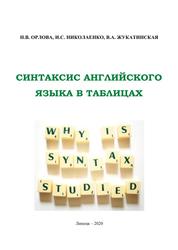 Синтаксис английского языка в таблицах, Учебное пособие, Орлова Н.В., Николаенко И.С., Жукатинская В.А., 2020 — Пособие содержит таблицы по различным типам предложений, разработанный к ним банк упражнений и отрывки художественной прозы для анализа и перевода. … Книги по английскому языку
Синтаксис английского языка в таблицах, Учебное пособие, Орлова Н.В., Николаенко И.С., Жукатинская В.А., 2020 — Пособие содержит таблицы по различным типам предложений, разработанный к ним банк упражнений и отрывки художественной прозы для анализа и перевода. … Книги по английскому языку Неличные формы английского глагола, Учебное пособие, Оларь Ю.В., 2022 — Учебное пособие предназначено для студентов второго курса гуманитарного института. Целью пособия является формирование и совершенствование коммуникативной компетенции будущих учителей иностранных … Книги по английскому языку
Неличные формы английского глагола, Учебное пособие, Оларь Ю.В., 2022 — Учебное пособие предназначено для студентов второго курса гуманитарного института. Целью пособия является формирование и совершенствование коммуникативной компетенции будущих учителей иностранных … Книги по английскому языку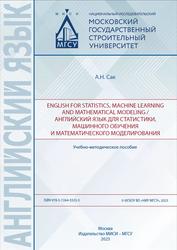 Английский язык для статистики, машинного обучения и математического моделирования, Сак А.Н., 2023 — Учебно-методическое пособие содержит тексты и упражнения по лексике и грамматике для основных разделов математической статистики и машинного обучения, таких как … Книги по английскому языку
Английский язык для статистики, машинного обучения и математического моделирования, Сак А.Н., 2023 — Учебно-методическое пособие содержит тексты и упражнения по лексике и грамматике для основных разделов математической статистики и машинного обучения, таких как … Книги по английскому языку
Предыдущие статьи:
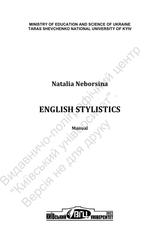 English Stylistics, Manual, Neborsina N., 2023 — English Stylistics is designed to introduce students to a range of rhetorical categories, expressive means and functional styles of the … Книги по английскому языку
English Stylistics, Manual, Neborsina N., 2023 — English Stylistics is designed to introduce students to a range of rhetorical categories, expressive means and functional styles of the … Книги по английскому языку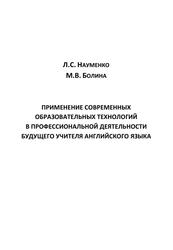 Применение современных образовательных технологий в профессиональной деятельности будущего учителя английского языка, Учебно-методическое пособие, Науменко Л.С., 2023 — В пособии рассмотрены вопросы, касающиеся использования будущими педагогами современных технологий в образовательном процессе общеобразовательной школы. Предложены материалы, углубляющие понимание теоретических … Книги по английскому языку
Применение современных образовательных технологий в профессиональной деятельности будущего учителя английского языка, Учебно-методическое пособие, Науменко Л.С., 2023 — В пособии рассмотрены вопросы, касающиеся использования будущими педагогами современных технологий в образовательном процессе общеобразовательной школы. Предложены материалы, углубляющие понимание теоретических … Книги по английскому языку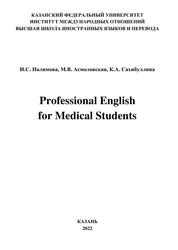 Professional English for Medical Students, Учебное пособие, Налимова И.С., Асмоловская М.В., Сахибуллина К.А., 2022 — Учебное пособие предназначено для студентов медицинских специальностей и включает в себя аутентичные тексты по актуальным проблемам медицины, практические задания, направленные … Книги по английскому языку
Professional English for Medical Students, Учебное пособие, Налимова И.С., Асмоловская М.В., Сахибуллина К.А., 2022 — Учебное пособие предназначено для студентов медицинских специальностей и включает в себя аутентичные тексты по актуальным проблемам медицины, практические задания, направленные … Книги по английскому языку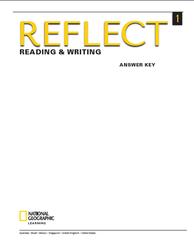 Reflect reading and writing 1, Answer key, Pathare G. — Фрагмент из книги. We live in a small apartment. There are four rooms. My favorite room is my bedroom. It … Книги по английскому языку
Reflect reading and writing 1, Answer key, Pathare G. — Фрагмент из книги. We live in a small apartment. There are four rooms. My favorite room is my bedroom. It … Книги по английскому языку




